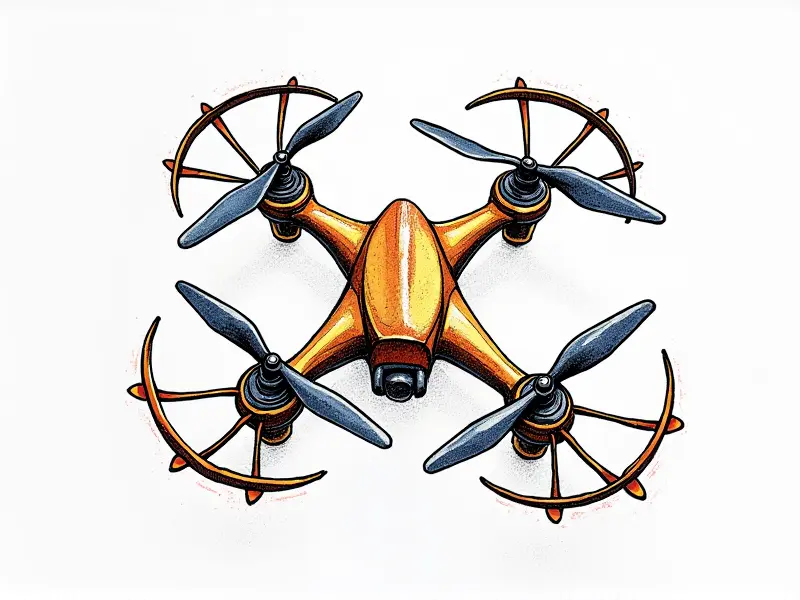RC helicopter wind resistance?

Mastering RC Helicopter Flight in High Winds
Flying remote control (RC) helicopters can be an exhilarating hobby, but it becomes significantly more challenging when the winds pick up. Understanding how to manage wind resistance is crucial for maintaining control and ensuring a safe flight experience. This article delves into various aspects of flying RC helis in windy conditions, providing tips and strategies to enhance your performance.
Best RC Helicopter Designs for Wind Resistance
The design of an RC helicopter plays a critical role in how it handles wind resistance. Certain models are specifically engineered with aerodynamics that make them more stable during gusty weather. Features such as larger rotor blades, robust frames, and advanced control systems can significantly improve your heli's performance.
Key Design Elements
- Larger Rotor Blades: Larger rotors provide better lift and stability in strong winds.
- Rugged Frames: Stronger frames resist damage from sudden gusts and turbulence.
- Advanced Control Systems: Enhanced electronics offer more precise control over the heli's movements.
Enhancing RC Helicopter Performance in Windy Weather
To maximize your RC helicopter’s performance during windy conditions, consider implementing several strategies. These include adjusting flight settings, choosing appropriate flying locations, and maintaining optimal battery levels.
Flying Settings Adjustments
- Adjust Gyro Sensitivity: Increasing gyro sensitivity can help maintain stability in high winds.
- Tune Collective Pitch: Properly tuning the collective pitch ensures better lift and control.
Flying Locations
Selecting an appropriate flying location is crucial. Avoid areas with tall obstacles or strong crosswinds that can disrupt your flight path. Opt for open fields or parks where you have more space to maneuver safely.
RC Helicopter Stability: Dealing with Wind Resistance
Maintaining stability in high winds requires a combination of skill and equipment adjustments. Understanding how wind affects the heli’s aerodynamics is essential for keeping it under control.
Aerodynamic Principles
- Angle of Attack: Adjusting the angle at which the rotor blades meet the air can improve lift and stability.
- Lift-to-Drag Ratio: Optimizing this ratio enhances overall performance in windy conditions.
Flying RC Helis: Tips for Battling Wind Resistance
Mastering wind resistance involves more than just equipment; it requires skill and technique. Here are some tips to help you navigate gusty days:
Tips for Handling Strong Winds
- Practice Hovering: Master hovering techniques to maintain control during sudden gusts.
- Use Tail Rotor Compensation: Adjust tail rotor settings to counteract wind-induced yaw.
- Monitor Battery Levels: Ensure your batteries are fully charged for consistent performance.
Surviving Gusty Days with Your RC Helicopter
Flying in gusty conditions can be daunting, but with the right approach and equipment, you can enjoy safe and enjoyable flights. Here’s how to prepare:
Pre-flight Checklist
- Check Weather Conditions: Avoid flying during severe weather.
- Inspect Equipment: Ensure all components are functioning correctly before takeoff.
RC Helicopters That Handle Wind Like a Pro
Certain RC helicopter models stand out for their ability to handle wind resistance effectively. These helicopters often feature robust designs and advanced aerodynamics, making them ideal choices for windy conditions:
- Model A: Large Rotor Blades & Enhanced Stability Features
- Model B: Advanced Control Systems & Aerodynamic Design
Understanding Wind Effects on RC Helicopter Flight
To effectively manage wind resistance, it’s important to understand how different types of winds affect your helicopter. Crosswinds and headwinds present unique challenges that require specific techniques to overcome.
Crosswinds vs. Headwinds
- Crosswinds: Adjust flight path to compensate for lateral wind forces.
- Headwinds: Use increased lift and pitch settings to maintain altitude.
Boost Your RC Helo's Performance Against Wind
Improving your heli’s performance in windy conditions involves both hardware upgrades and skill development. Consider upgrading components such as servos, batteries, and control systems to enhance responsiveness and stability.
Upgrading Components
- Servos: Upgraded servos provide faster response times.
- Batteries: High-capacity batteries offer longer flight durations with consistent power.
Essential Gear for Flying RC Helis in Windy Conditions
To ensure a successful flight during windy days, having the right gear is essential. This includes protective equipment and tools that help maintain your heli’s performance:
- Protective Covers: Prevent damage from rain or dust.
- Tuning Tools: Adjust settings for optimal performance.
Maximize Control of RC Helicopters in Wind
Maintaining control over your RC helicopter during windy conditions requires a combination of skill and the right equipment. By mastering these techniques, you can enjoy flying even on gusty days:
Tips for Maintaining Control
- Practice Regularly: Consistent practice enhances your ability to handle wind resistance.
- Use Advanced Features: Leverage advanced control features like auto-stabilization and gyro compensation.
Conclusion
Flying RC helicopters in windy conditions presents unique challenges, but with the right knowledge and equipment, you can enhance your performance and enjoy safe flights. By understanding wind effects, choosing appropriate designs, and implementing effective strategies, you’ll be better prepared to tackle gusty days with confidence.

